“Here must reside both the redeemed and the defiant”
By Dr. William Edmund Fahey, Ph.D.
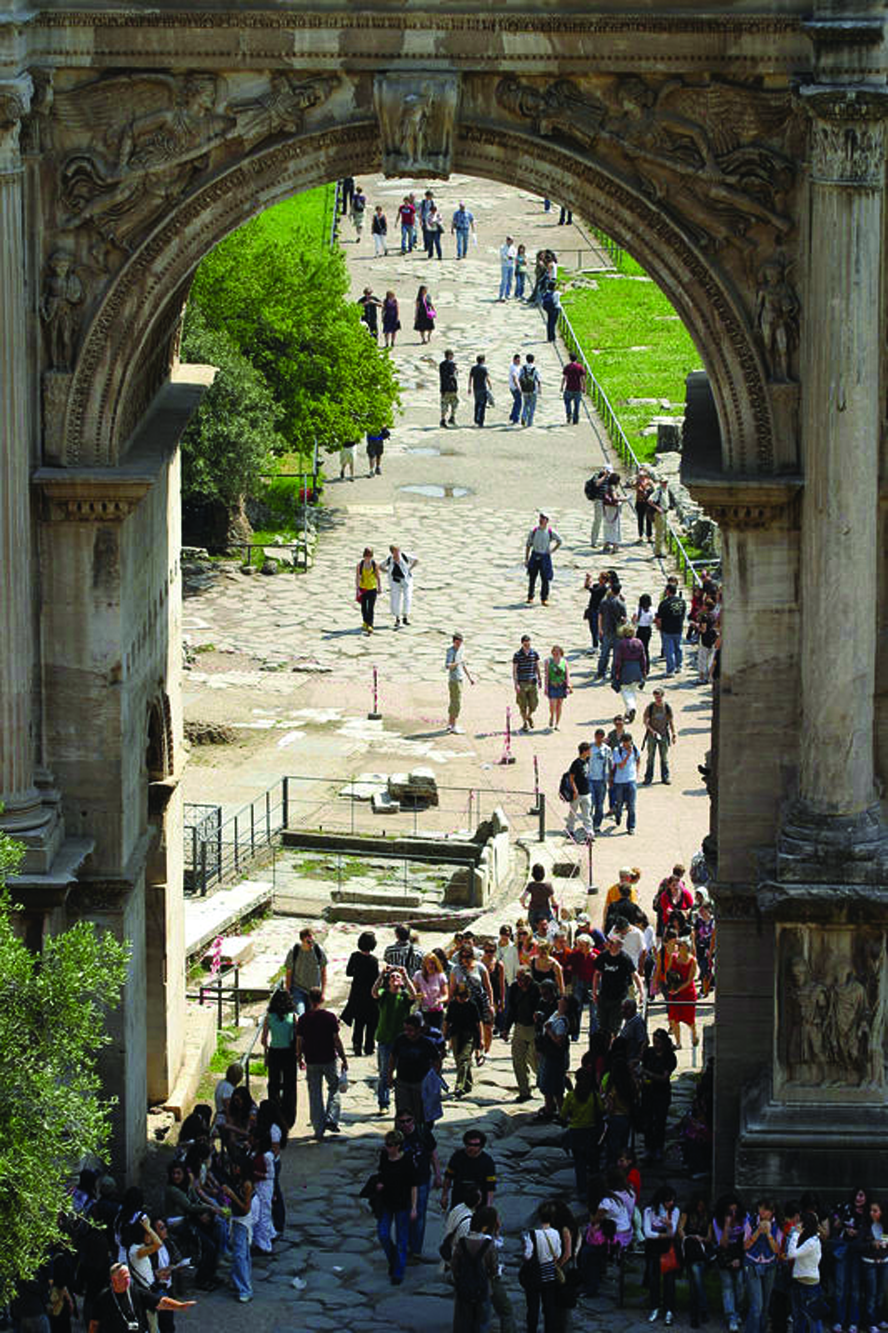
Tourists pass under the Arch of Septimius Severus in the Roman Forum
Rome is a city of treachery and treason, infection, and sin. It is appropriate that the Vicar of Christ should have been first murdered here, and — with the exception of long periods of scandalous absence — that he should have this urbs sacra et caput mundi (“sacred city and head of the world”) providentially fixed as his seat and home. Rome is the city of the West, the heart of the Church and civilization. Here must reside both the redeemed and the defiant; the innocent, the penitent, and the unreconstructed. Such a city can never be but the symbol of promise, decline, fall, and renewal — that is, until the fulfillment of the ages turns our attention to a new city. Until then, let Nathaniel Hawthorne’s Marble Faun stand as America’s literary tribute to the city and all that Rome looses and binds in the human character.
When I first came to Rome, I came like so many: filled with strong images of imperial grandeur and pontifical solemnity. I came late both as a historian and a pilgrim. The city of my imagination had been laid out and constructed on monumental scale. In earlier years, I had soaked myself along Hadrian’s Wall and the sea defenses of the Saxon Shore. I had spent several summers surveying Legionary fortifications in what were once Armenia and Syria. I had tramped through the province; now I would enter Rome triumphant. I would march through the arches of Piranesi, pledge an oath before Robert’s Marcus Aurelius, sweep along the Via Sacra (just as it had been photographed in my Jenney’s Latin). I would stand in Maccari’s hall and withCicero speak “Quo usque tandem abutere, Catilina, patientia nostra…” Like a less dapper Kenneth Clarke, I would stride across the Ponte Sant’Angelo and gaze upon the gleaming resolution of a besieged papacy. I would inhabit streets teeming with sensuous and treacherous characters just as Robert Graves had delineated them. I would sit with Gibbon on the steps of Santa Maria in Aracoeli to the tolling of bells and survey the passing of things while the chant of Vespers hung faintly in the air.
As I rode in, that first time, from Fiumicino, I felt less like Judah Ben-Hur gazing upon the Palaestra, and more like an Elizabethan Cassius uttering in disbelief — “What trash is Rome, what rubbish and what offal.” My encounter with Rome was just what I needed, a humiliation. A complete and utter devastation of the idols in my mind. It is not that all my youthful readings and meditations were false, in the common sense, but the images I had constructed in my imagination were idols; and like all who lose their idols, I was left with a confusion and sadness at that moment of my arrival in Rome. Rome conquered and dictated terms — parcere subjectis et debellare superbos (“to spare the subjected and cast down the proud”). Ironically, I did not fully understand this until my second trip to Rome during the Pauline Pilgrimage year (June 2008-June 2009, marking the 2,000th year of St. Paul’s birth). For that trip, I brought three books — my Bible, Pope Benedict’s Paul the Apostle… and Nathaniel Hawthorne’s The Marble Faun.
During that pilgrimage, I was cured of two maladies. I had prayed for healing of the body and mind and through them the cleansing and strengthening of my soul. In all truth, a leg injury that had burdened me for over two decades simply vanished after my visit to San Paolo alle Tre Fontane (St. Paul’s at the Three Fountains) — the church built over the site of St. Paul’s execution. Equally wonderful was reading The Marble Faun at the Villa Seranella to the merry song of the rose-ringed parakeets and striking upon a particularly illuminating passage.
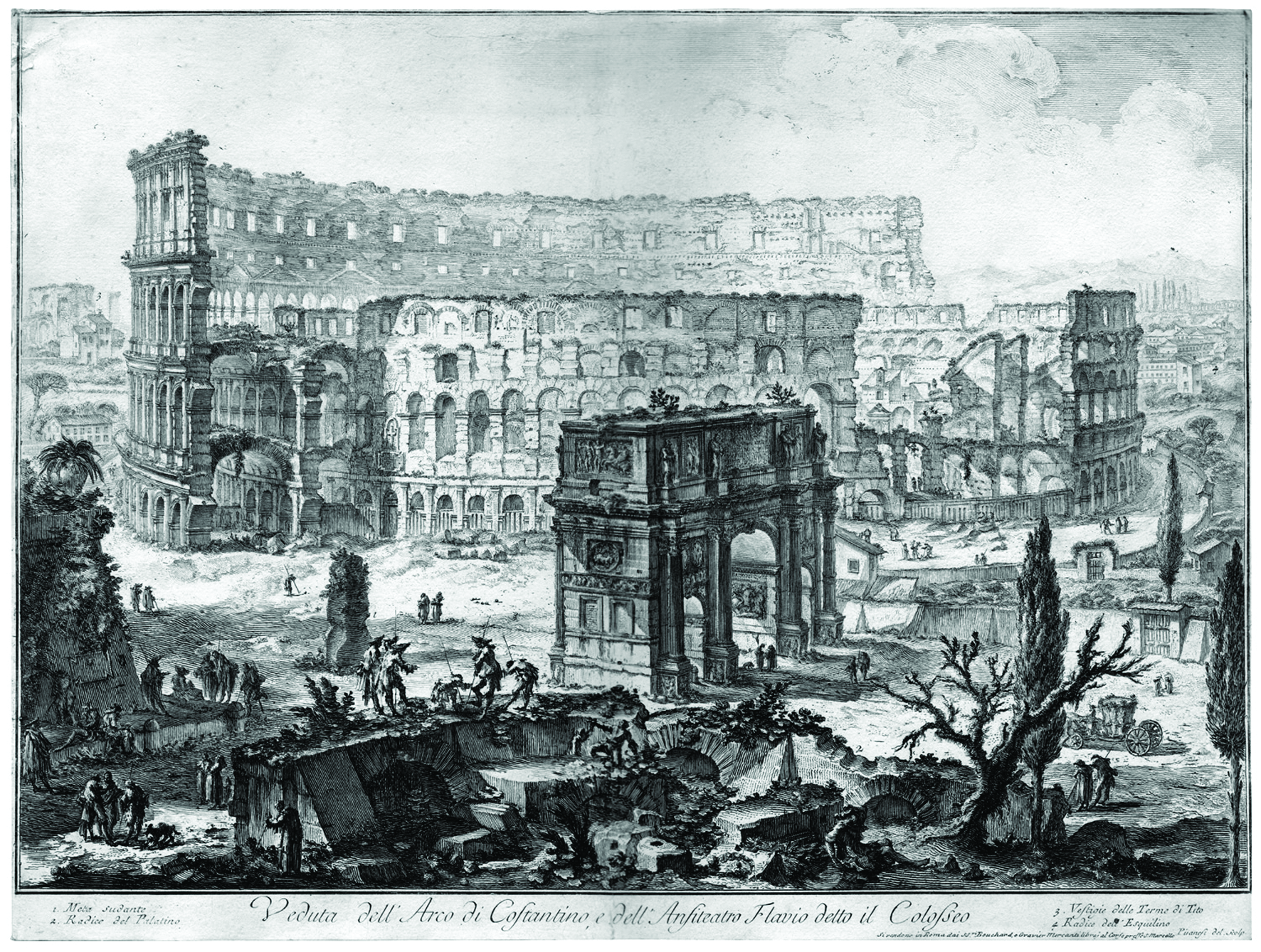
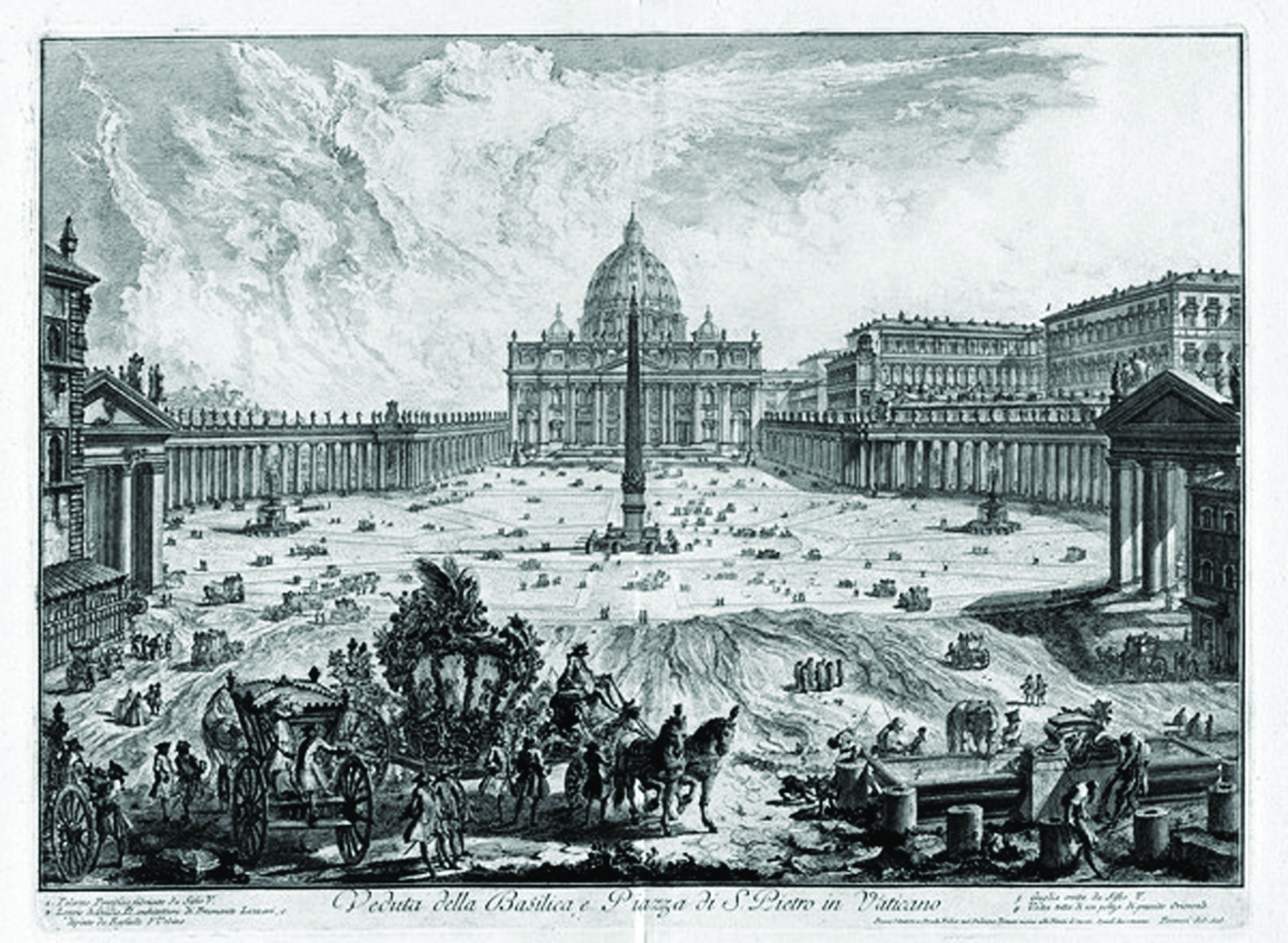
Two etchings from the second half of the 1700s by the great Roman artist and engraver Giovanni Battista Piranesi
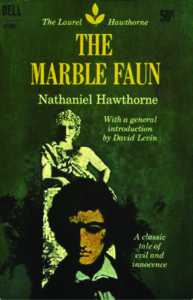 THE MARBLE FAUN is a tale that explores, as Hawthorne put it, “the Human Soul, with its choice of good or evil close at hand.” It is a tale of four friends, American and European, who are drawn to Rome by their own conceptions of its beauty and power and move through their own Edenic revelry and fall from innocence. Three are artists; one is a mysterious man, sprung up as if from the soil, as if from Arcady. All are drawn into a terrible tragedy, and agonize over the question of whether beauty, love, and fidelity have the power to lift the human beyond the mire of sin, or not. It is a story of waking up on the verge of a precipice and saying, as one of the protagonists says at a poignant moment, “Oh, my friend, will you be my friend indeed? I am lonely, lonely, lonely! There is a secret in my heart that burns me — that tortures me!” Like much of Hawthorne, it is a novel which deals with the central burden a human must carry: the knowledge of his own soul, and the passage of time and decisions upon it.
THE MARBLE FAUN is a tale that explores, as Hawthorne put it, “the Human Soul, with its choice of good or evil close at hand.” It is a tale of four friends, American and European, who are drawn to Rome by their own conceptions of its beauty and power and move through their own Edenic revelry and fall from innocence. Three are artists; one is a mysterious man, sprung up as if from the soil, as if from Arcady. All are drawn into a terrible tragedy, and agonize over the question of whether beauty, love, and fidelity have the power to lift the human beyond the mire of sin, or not. It is a story of waking up on the verge of a precipice and saying, as one of the protagonists says at a poignant moment, “Oh, my friend, will you be my friend indeed? I am lonely, lonely, lonely! There is a secret in my heart that burns me — that tortures me!” Like much of Hawthorne, it is a novel which deals with the central burden a human must carry: the knowledge of his own soul, and the passage of time and decisions upon it.
What was that first illumination that I was given to the song of the Parakeet? It came with the following words, words that express a central idea which in different ways Hawthorne reconfigures again and again throughout the book. The quartet of friends in the novel goes to visit the Coliseum at night. Their minds are filled with Romantic notions of what the experience of the evening will be (and little do they know, though we the readers have a growing apprehension of ill-tidings). The friends enter the Coliseum, which is flooded with the startling light of the moon, and they find it, as Hawthorne says, “a great empty space … too distinctly visible.” With a strong sense of irony, he continues, “The splendor of the revelation took away that inestimable effect of dimness and mystery by which the imagination might be assisted to build a grander structure than the Coliseum and to shatter it with more picturesque decay. Byron’s celebrated description is better than the reality.” The party then goes on to observe other Americans and English “paying the inevitable visit by moonlight, and exalting themselves with raptures that were Byron’s, and not their own.” Throughout the novel, Hawthorne forces the reader to meditate with him on the doom of the thoughtful: how does one untangle the visions of the imagination from firmness of the world? How do we turn away from idols toward reality, without an abandonment of the arts of civilization that make our lives tolerable and meaningful, if not cheerful?
Rome instructs; great art and artists will always instruct. When in Rome, I try to take the student through the Piazza de Campidolgio and through the Capitoline Museum, an area that plays a central part in Hawthorne’s tale. But there is something else I like to show them. There is a little path I know that will take you around corners, through arches, and up steps to a hidden café, atop the Museum, from the patio, you can scan Rome — to the east the ruins of the Forum, to the west you gaze over the Campo di Fiori towards St. Peter’s. There is life. There is Roma aeterna.
The reality of Rome now works well with my imagination. They are reconciled. When I gaze on the messy stone squalor of the Forum, a history of magnanimous failures, I see more the longing spirit in what was attempted, and less the disarray. Or perhaps, better, I see that the ruins have a quiet nobility to them, for a ruin speaks of hope, initiative, and action. A noble ruin is a testimony of a noble life. The ruin demonstrates human failure and anticipates divine perfection. And when the tolling of Aracoeli persuades me to look the other direction, I am not sad, nor do I think of my mind as divided between the literary Rome of Edward Gibbon (or Hawthorne) and the Rome of Benedict and Francis. The tolling bells that I hear now are real, at one with all that I have read, and they call me back to this one thought: Benigne fac, Domine, in bona voluntate tua Sion: ut aedificetur muri Jerusalem (“Deal kindly, Lord, and in your goodwill with Zion, so that the walls of Jerusalem may be built up,” Ps. 50).
Dr. William Fahey is President of Thomas More College of Liberal Arts in Merrimack, New Hampshire, USA.

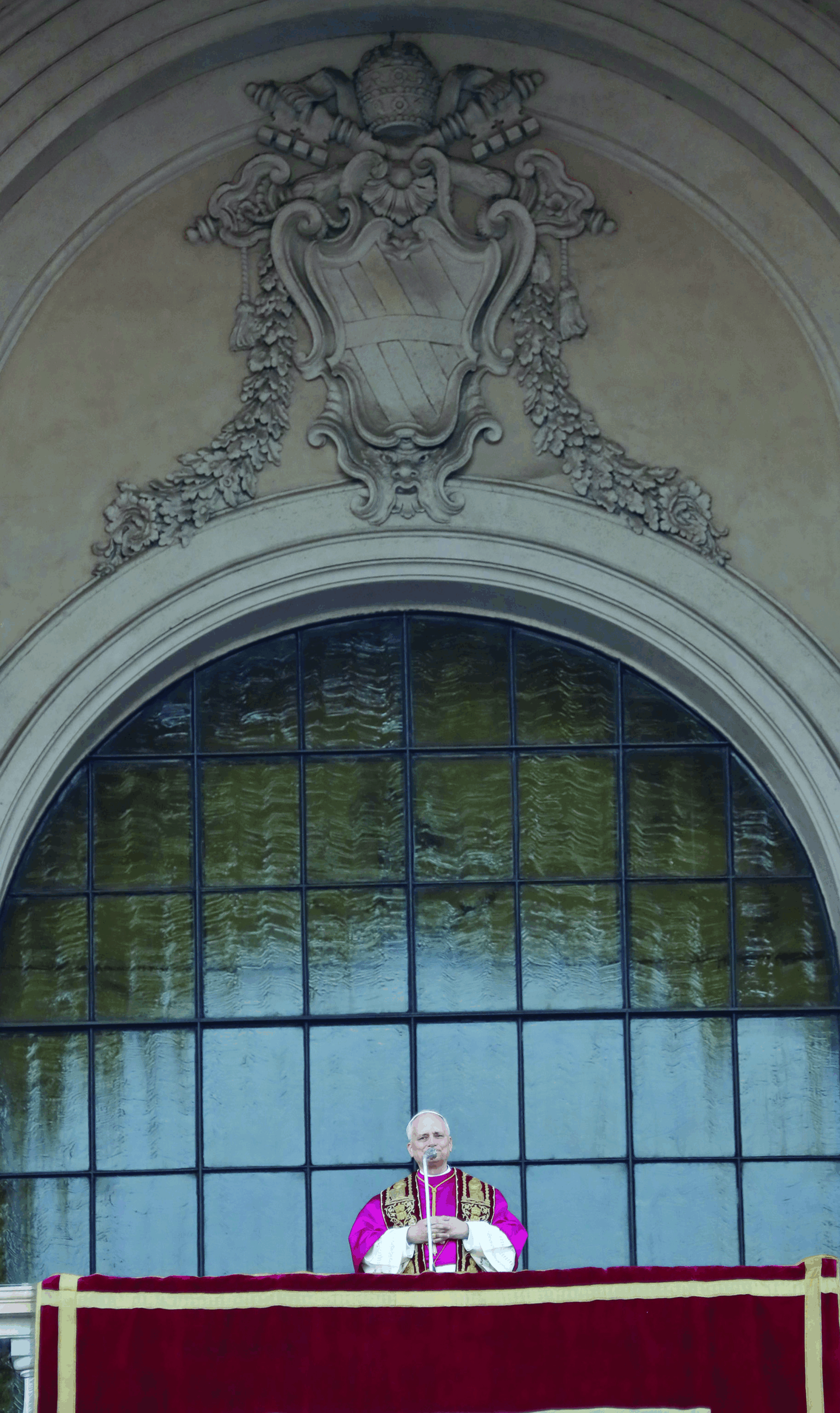
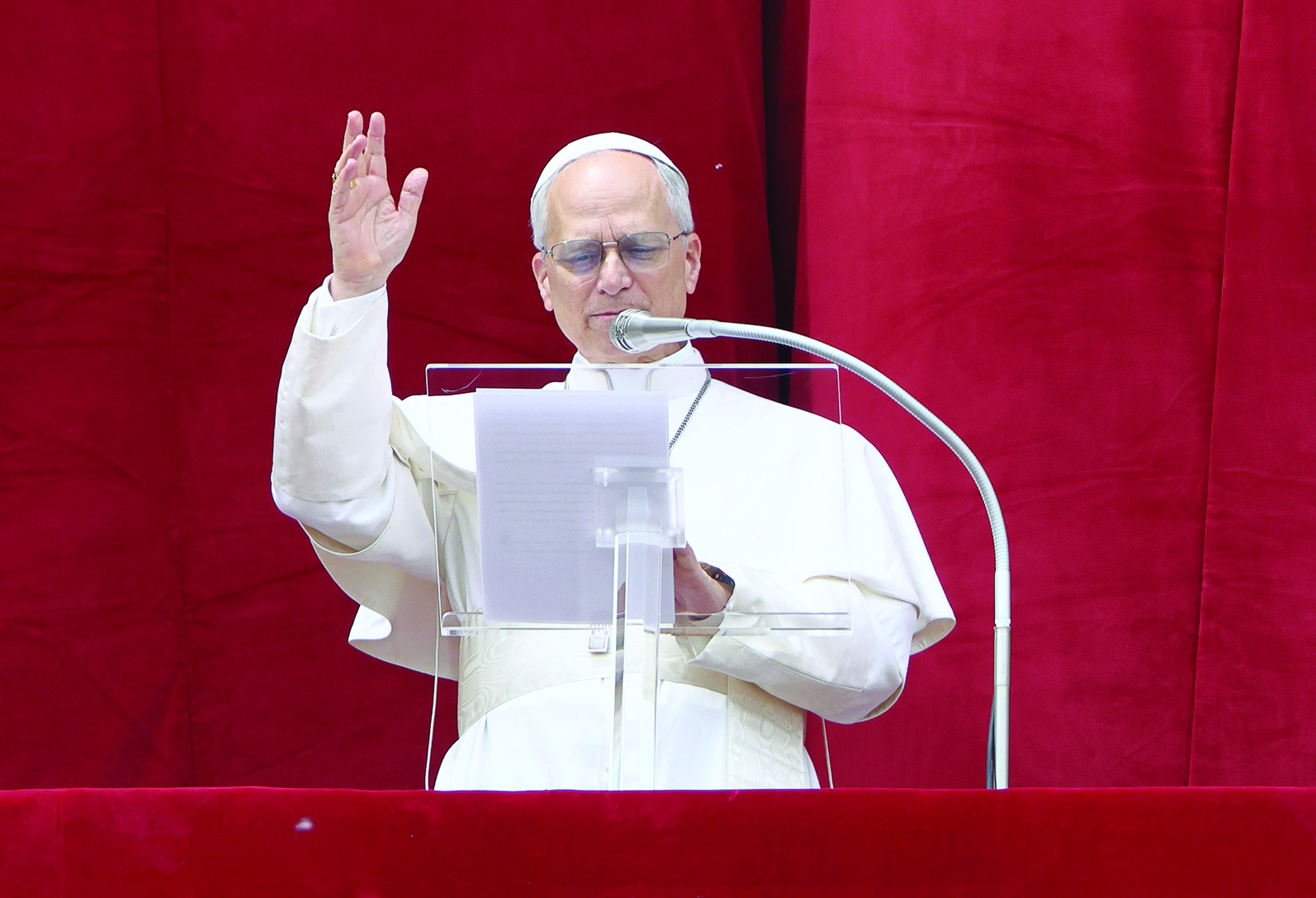

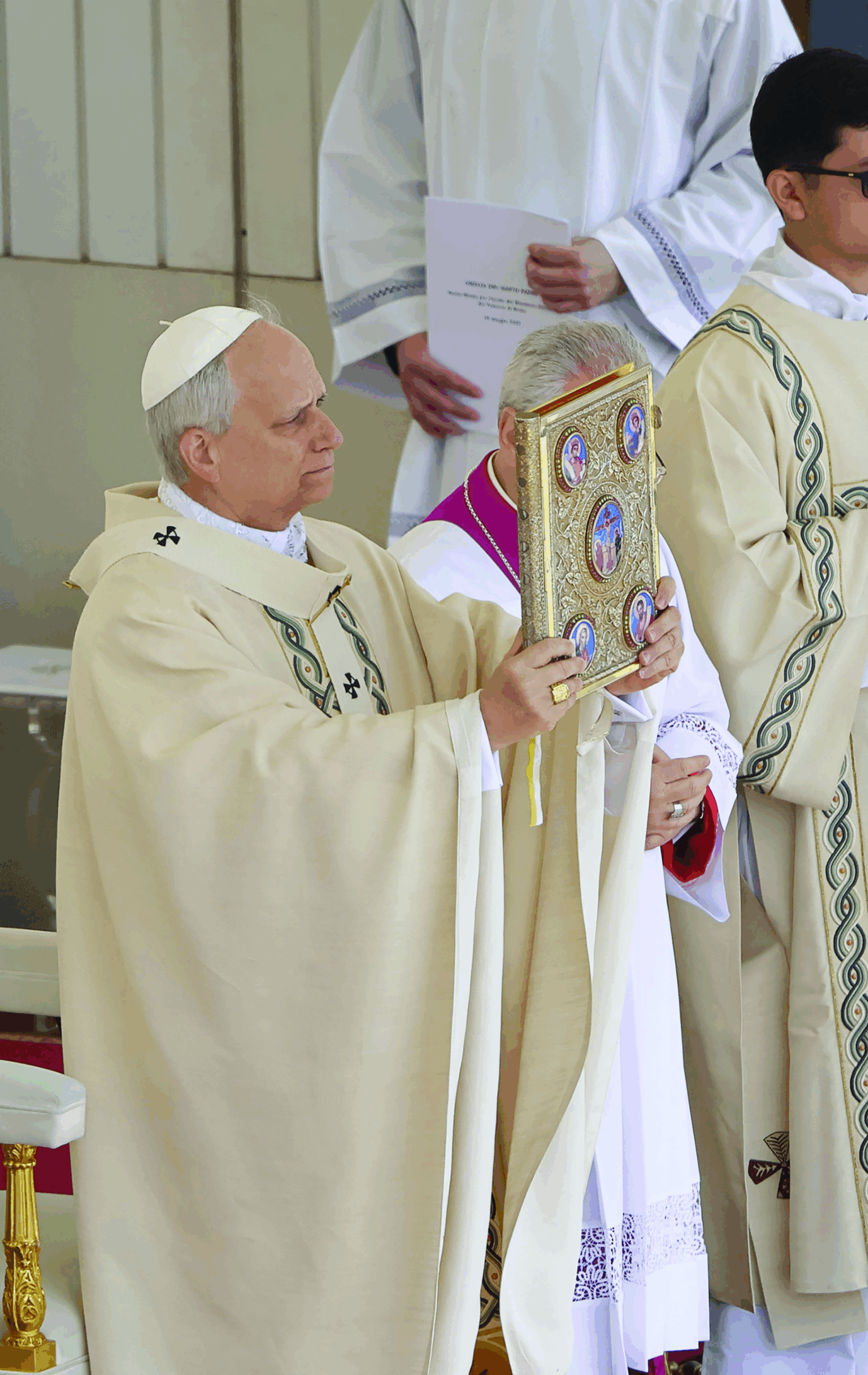
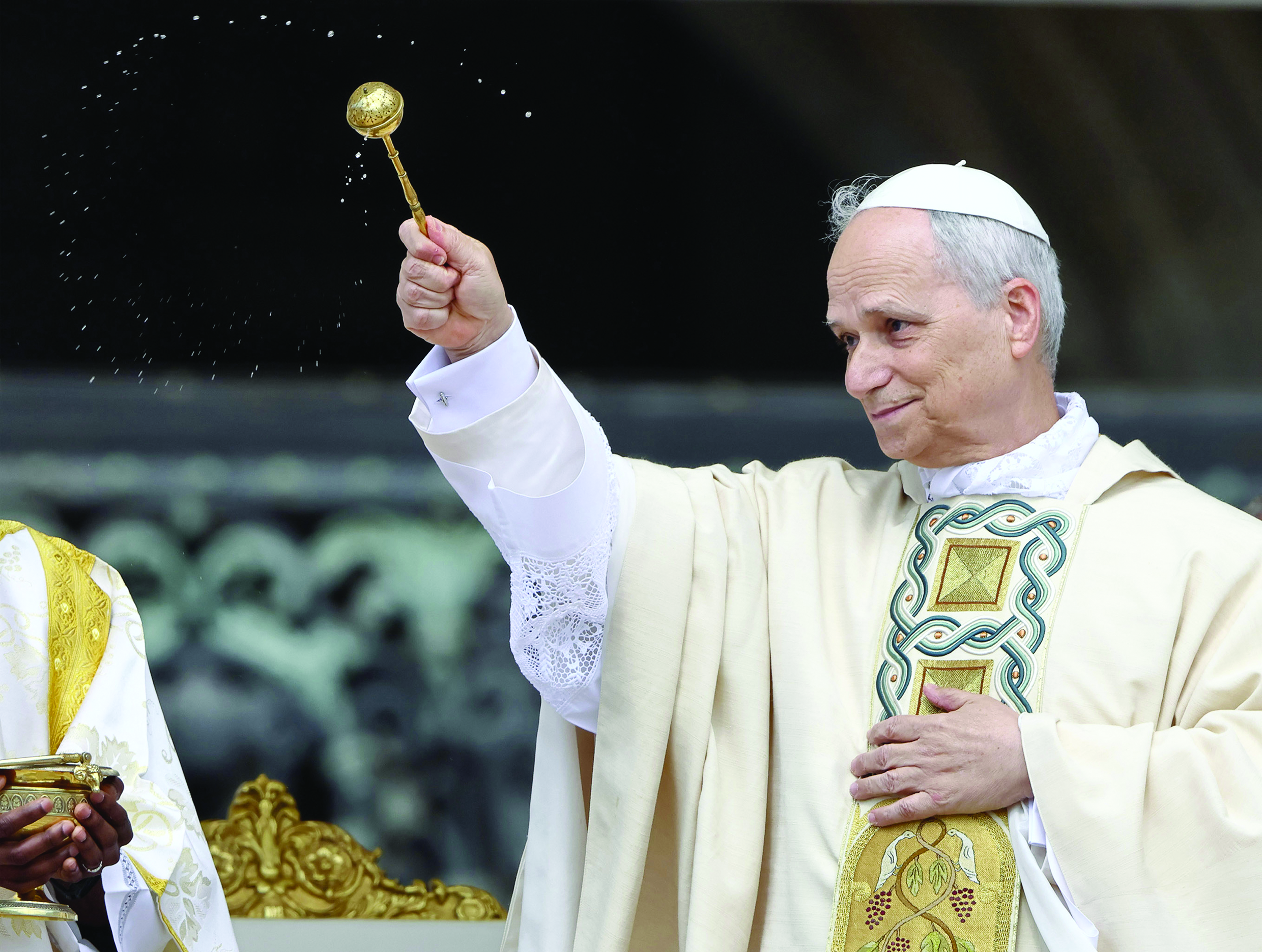
Facebook Comments